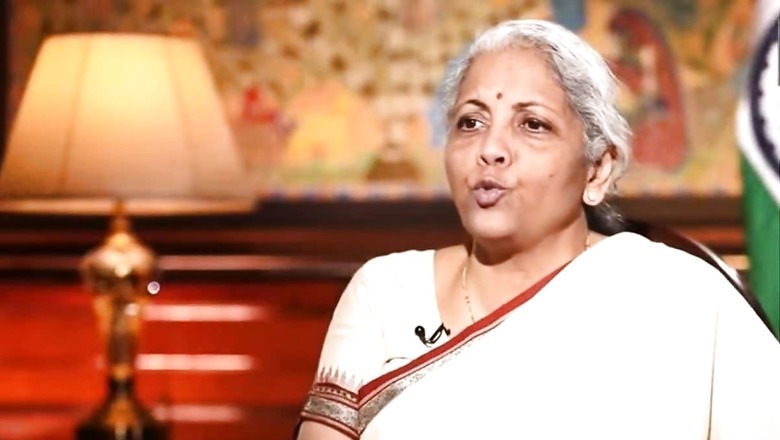'Record-breaking' GST Collections: FM Sitharaman Releases Figures to Counter Opposition-ruled States

views
Collections for the goods and services tax have registered a high increase and crossed Rs 2 lakh crore, amid the opposition-ruled state versus Centre debate gathering steam during the ongoing Lok Sabha elections. This not only indicates improvement in economic activity, but also that most opposition-ruled states have more revenue at their disposal contrary to their claims.
Explaining with figures in a long post on social media, union finance minister Nirmala Sitharaman said: “Two significant milestones were reached in the larger GST architecture. The President of the GST Appellate Tribunal (GSTAT) has been appointed & gross GST collections crossed a landmark of Rs 2 lakh crore – thanks to heightened economic activity. This post is divided into three parts. The first part explores the origins of GST and its role in streamlining the Indirect tax system. The second part discusses how GST has benefitted people through a pro-poor approach. The third part underscores GST’s role in promoting cooperative & fiscal federalism…”
The opposition, particularly the Congress and its senior leader Rahul Gandhi, has been attacking the government calling the GST ‘Babbar tax’ and has promised to remove it if the party comes to power. But, the figures show that this tax has helped states more than it has the Centre. Sources said armed with these figures, which also show that states have benefitted, the Centre can now counter allegations coming from state governments like West Bengal, Telangana and Karnataka that they have been deprived of funds.
Part -3: – GST exemplifies Cooperative Federalism in India, empowering states. The @GST_Council, with a 75% majority vote requirement, assigns one-third voting power to the Centre & two-thirds to states. Out of 52 meetings, all decisions but one was reached through consensus. As… pic.twitter.com/1YR96jWCmr— Nirmala Sitharaman (Modi Ka Parivar) (@nsitharaman) May 6, 2024
In the third part of her post, Sitharaman said it is a myth that all GST collections are pocketed by the Centre. “Cooperative Federalism in India, empowering states. The @GST_Council, with a 75% majority vote requirement, assigns one-third voting power to the Centre & two-thirds to states. It is a myth that all GST collections are pocketed by the Centre. GST contributes significantly to state revenues – States receive 100% of SGST collected in that state, approx. 50% of IGST (i.e. on inter-state trade). A significant portion of CGST, i.e., 42%, is devolved to the states based on the Finance Commission’s recommendations. Without GST, states’ revenue from subsumed taxes from FY 18-19 to 2023-24 would have been Rs. 37.5 lakh crore. With GST, states’ actual revenue amounted to Rs. 46.56 lakh crore…” she wrote.
The minister further said GST is an expression of the Narendra Modi-led government’s commitment to ‘Sabka saath, sabka vikas, sabka vishwas, sabka prayaas’. She added that through the GST Council, both central and state governments should collectively strive to make the system more taxpayer-friendly to meet the prime minister’s vision of a ‘Viksit Bharat’.
In the first part of her post, she said: “Before GST, India’s indirect tax system was fragmented with every state practically a distinct market in itself with different rules and tax rates. Inputs for central excise duty, etc, could not be availed, leading to an increased tax burden for the common people. The GST has streamlined 17 taxes and 13 cess into a five-tier structure, simplifying the tax regime…”
She said the GST has also reduced 495 different submissions like challans, forms, declarations among others across states to only 12. It has simplified compliances through uniform processes, simple registration, single returns, and a fully IT-driven system with minimal physical interface.
Check Lok Sabha Election 2024 Phase 3 Schedule, Key Candidates And Constituencies At News18 Website.














Comments
0 comment